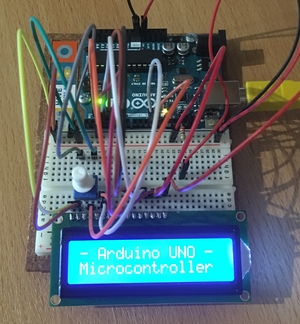Following idea:
Following idea:
You have a LCD-display with 2 rows.
You write the first line of a "text" to the second row. Then you clean the screen.
After a delay you write the first line to the first row and a the second line of the text to the second row. Then follows another clean and delay.
Then you write the second line to the first row and the third line to the second row. And so on ...
When the end of the text is reached the whole process starts again from the beginning.
That way the impression of an "vertical moving" text is accomplished.
YouThe code I have a LCD-display with 2 rows.
You write the first line of a "text" to the second row. Then you clean the screen.
After a delay you write the first line to the first row and a the second line of the text to the second row. Then follows another clean and delay.
Then you write the second line to the first row and the third line to the second row. And so on ...
When the end of the text is reached the whole process starts again from the beginning.
That way the impression of an "vertical moving" text is accomplished.
The code I have written:written:
WorksIt works fine and by using an additional function I could avoid code-redundancies redundancies mostly.
But anyway: If someone has an idea how to improve my code or even doing it completely different in a better way, then I would appreciate his/her comment or answer. If someone has an idea how to improve my code or even doing it completely different in a better way, then I would appreciate his/her comment or answer.

